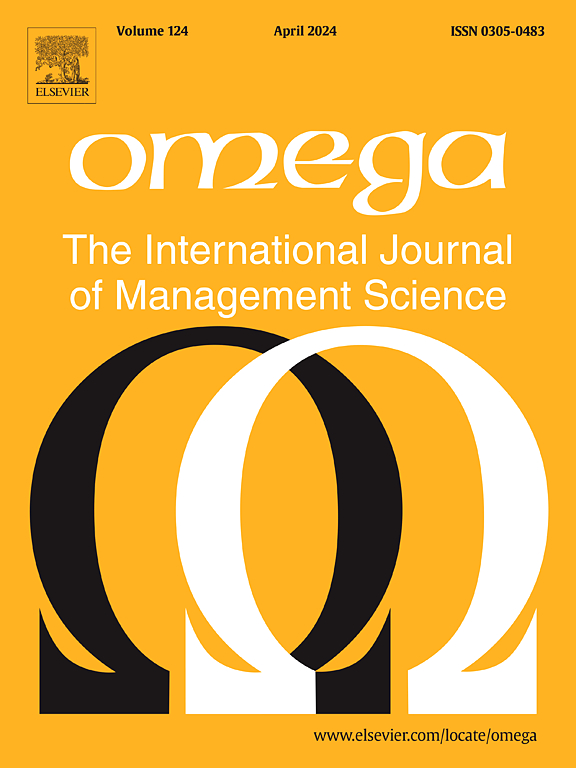Linking outcomes to costs: A unified measure to advance value-based healthcare
IF 6.7
2区 管理学
Q1 MANAGEMENT
Omega-international Journal of Management Science
Pub Date : 2024-12-29
DOI:10.1016/j.omega.2024.103270
引用次数: 0
Abstract
Guided by the Value-Based Healthcare framework, the healthcare sector increasingly aims to maximize patient value by improving the quality of care while containing costs, which requires aligning the interests of patients, health providers and payers. This study addresses the need for advanced patient value measurement techniques to navigate this complex balance by introducing a four-step framework that combines Data Envelopment Analysis (DEA) and Time-Driven Activity-Based Costing. The framework starts by defining Decision-Making Units and specifying the treatment pathway (Step 1), followed by selecting the relevant inputs (i.e., costs) and outputs (i.e., health outcomes) (Step 2). Next, the DEA model is tailored to fit the specific medical context (Step 3), ultimately translating the value equation into unified, individual value scores that rank patients by perceived value (Step 4). Unlike traditional healthcare evaluations, the multiple health outcomes are connected to granular costing information without relying on monetary values or subjective weighting. Using real-life data from a case study focused on psoriasis, we demonstrate that value assessments significantly differ when considering a comprehensive set of health outcomes, rather than relying on a single primary outcome or treating costs and outcomes separately. These holistic value scores are used to pinpoint inefficiencies on an individual level, analyse patterns of health improvements through cluster analysis, and assess the impact of contextual variables on value creation using econometric analysis. Our results revealed the complex interplay between outcomes and costs by identifying factors like the presence of comorbidities, which had no direct influence on costs or outcomes, as overall value driver. In summary, this research proposes an intuitive metric for value benchmarks across time, health providers and treatments, ultimately contributing to the effective delivery of personalized and value-based healthcare.
求助全文
约1分钟内获得全文
求助全文
来源期刊

Omega-international Journal of Management Science
管理科学-运筹学与管理科学
CiteScore
13.80
自引率
11.60%
发文量
130
审稿时长
56 days
期刊介绍:
Omega reports on developments in management, including the latest research results and applications. Original contributions and review articles describe the state of the art in specific fields or functions of management, while there are shorter critical assessments of particular management techniques. Other features of the journal are the "Memoranda" section for short communications and "Feedback", a correspondence column. Omega is both stimulating reading and an important source for practising managers, specialists in management services, operational research workers and management scientists, management consultants, academics, students and research personnel throughout the world. The material published is of high quality and relevance, written in a manner which makes it accessible to all of this wide-ranging readership. Preference will be given to papers with implications to the practice of management. Submissions of purely theoretical papers are discouraged. The review of material for publication in the journal reflects this aim.
 求助内容:
求助内容: 应助结果提醒方式:
应助结果提醒方式:


